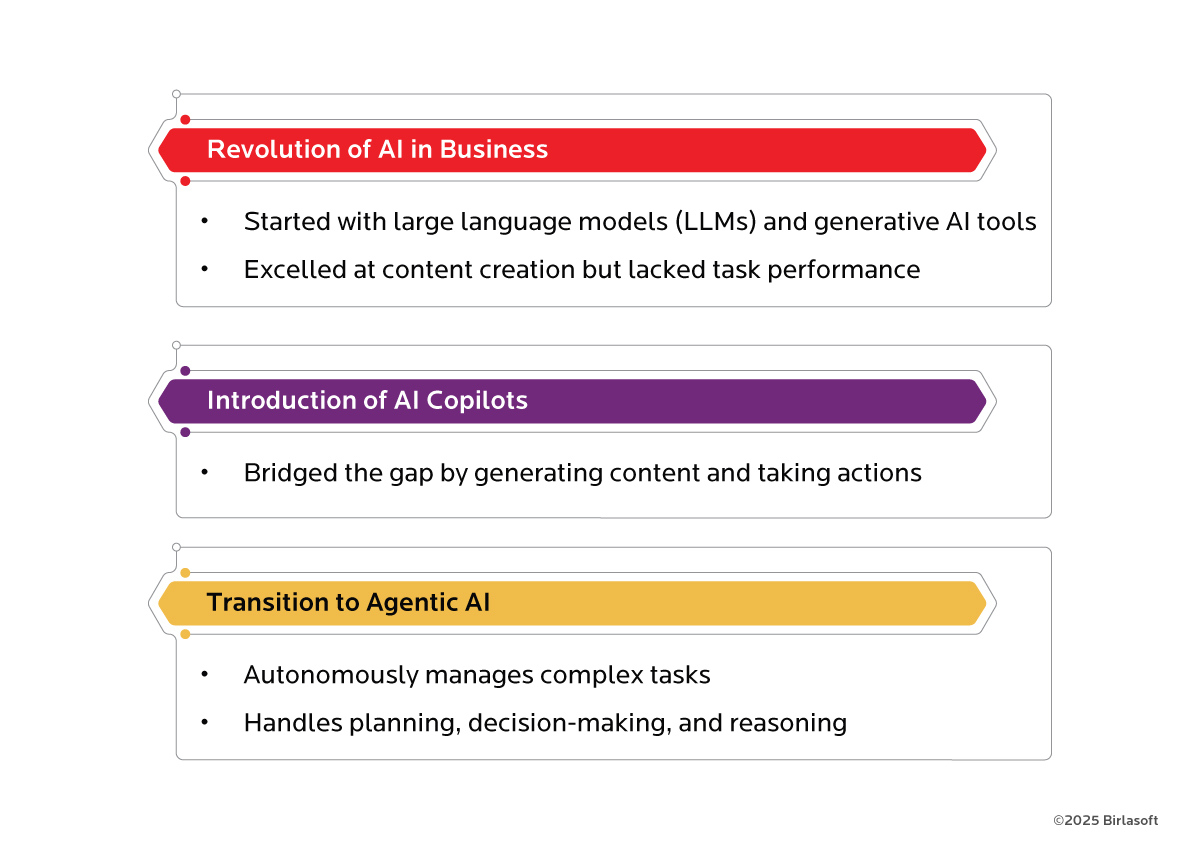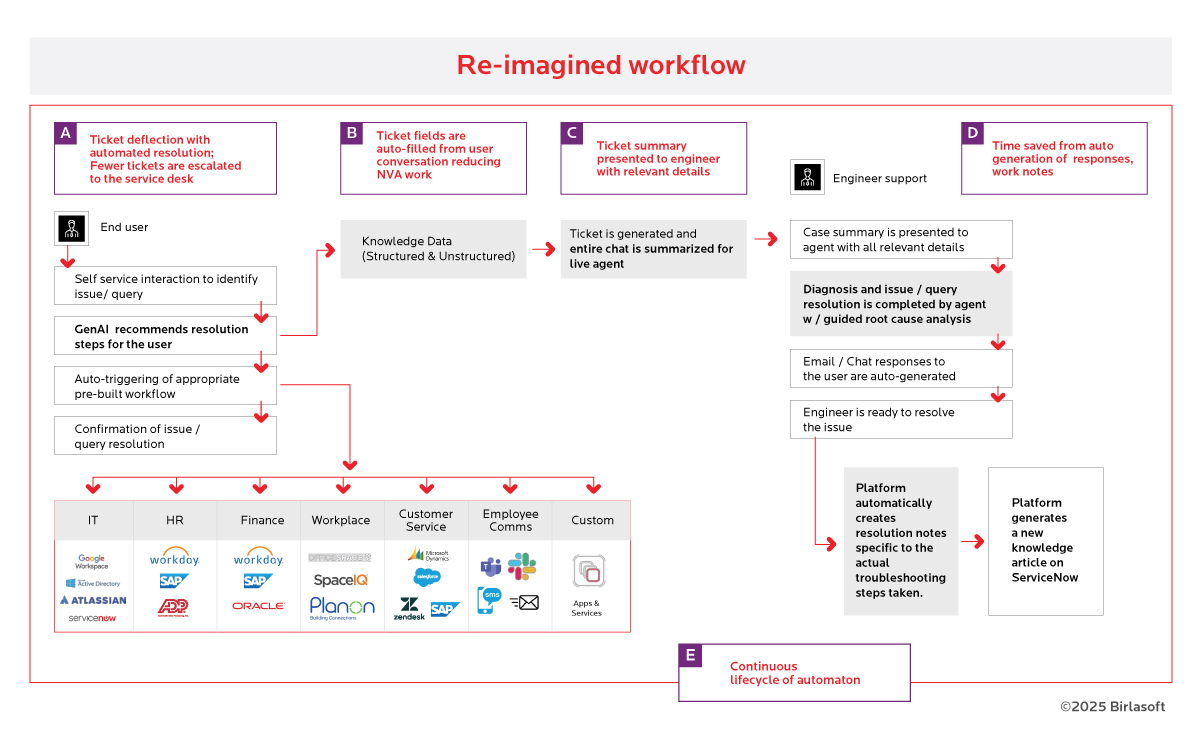Generative AI took the world of business by storm. LLMs like ChatGPT redefined the art of the possible with its creative prowess and upended key processes across functions. Yet, it lacked the ability to perform meaningful tasks.
GenAI was a powerful technology that had to be applied by humans to realize valuable outcomes. AI Copilots brought the ability to act, but they specialized in narrow domains. With the next frontier of evolution, everything is set to change with the emergence of Agentic AI.

What is agentic AI?
Agentic AI is a type of AI that is capable of planning, solving complex problems, and acting towards meaningful outcomes independently, without human intervention. Put simply, Agentic AI is AI with the agency to act of its own accord.
Agentic AI exhibits sophisticated reasoning capabilities and can plan iteratively to solve multi-step problems. Under the hood, it leverages LLMs to infer contexts, probabilistic techniques to make decisions, and learning frameworks to evolve with each interaction. Most AI Agents are based on a 4-step process to solve problems:
- they perceive by gathering all the facts,
- reason through the problem with LLMs,
- act by orchestrating actions through integrations, and
- learn from the feedback data pumped back into the system.
Types of AI Agents
AI Agents can be classified into the following types, based on the outcomes they enable:
- Generative information retrieval agents provide fast, context-aware responses by retrieving and synthesizing information from internal databases, past support tickets, and documentation. They are suitable for less-regulated environments, and diagnose issues and offer solutions
- Dynamic workflow agents autonomously interact with multiple systems and applications. They can discover APIs, sequence operations, and execute tasks efficiently. They streamline workflows by adapting to real-time process requirements.
- Prescriptive Knowledge Agents deliver precise, deterministic answers based on predefined workflows and curated datasets. They ensure accuracy and reliability, making them ideal for highly regulated contexts.
- User Assistant Agents enhance productivity by automating routine tasks such as scheduling, drafting documents, and managing daily operations. They act as personal AI assistants, optimizing individual efficiency.
The business case for adopting Agentic AI
While most businesses have found success with their AI investments, Agentic AI promises to deliver unprecedented impact, especially in troubled areas of even the most well-managed IT functions:
- Deflection of ~50% issues: Agentic AI can handle approximately half of the customer interactions across channels like chat, email, and voice, reducing the workload on human agents. This makes it especially valuable for IT Service Desks, where burnout has consistently affected overburdened teams.
- High Auto-Resolution Rate of ~75%: By continuously learning from resolution notes and dynamically creating workflows, Agentic AI can automatically resolve a significant volume of incoming requests. This is particularly valuable in IT operations, where complex troubleshooting, repetitive ticket resolutions, and real-time system monitoring demand speed, accuracy, and scalability beyond human capacity.
- Operational cost reduction of up to 40%: Today, organizations allocate a significant chunk of their IT budgets to internal staff and external support. Implementing Agentic AI solutions can reduce these costs, achieving a minimum ROI of 30%.
Achieve autonomous IT Service and Operations with Agentic AI
Before adopting Agentic AI, organizations must align their investment with the right use cases. Some of the most promising use cases include autonomous help desk solutions, anomaly detection, self-healing IT infrastructure, incident management, and compliance monitoring.
Consider the following four steps to achieving autonomous IT service and IT operations with Agentic AI.



